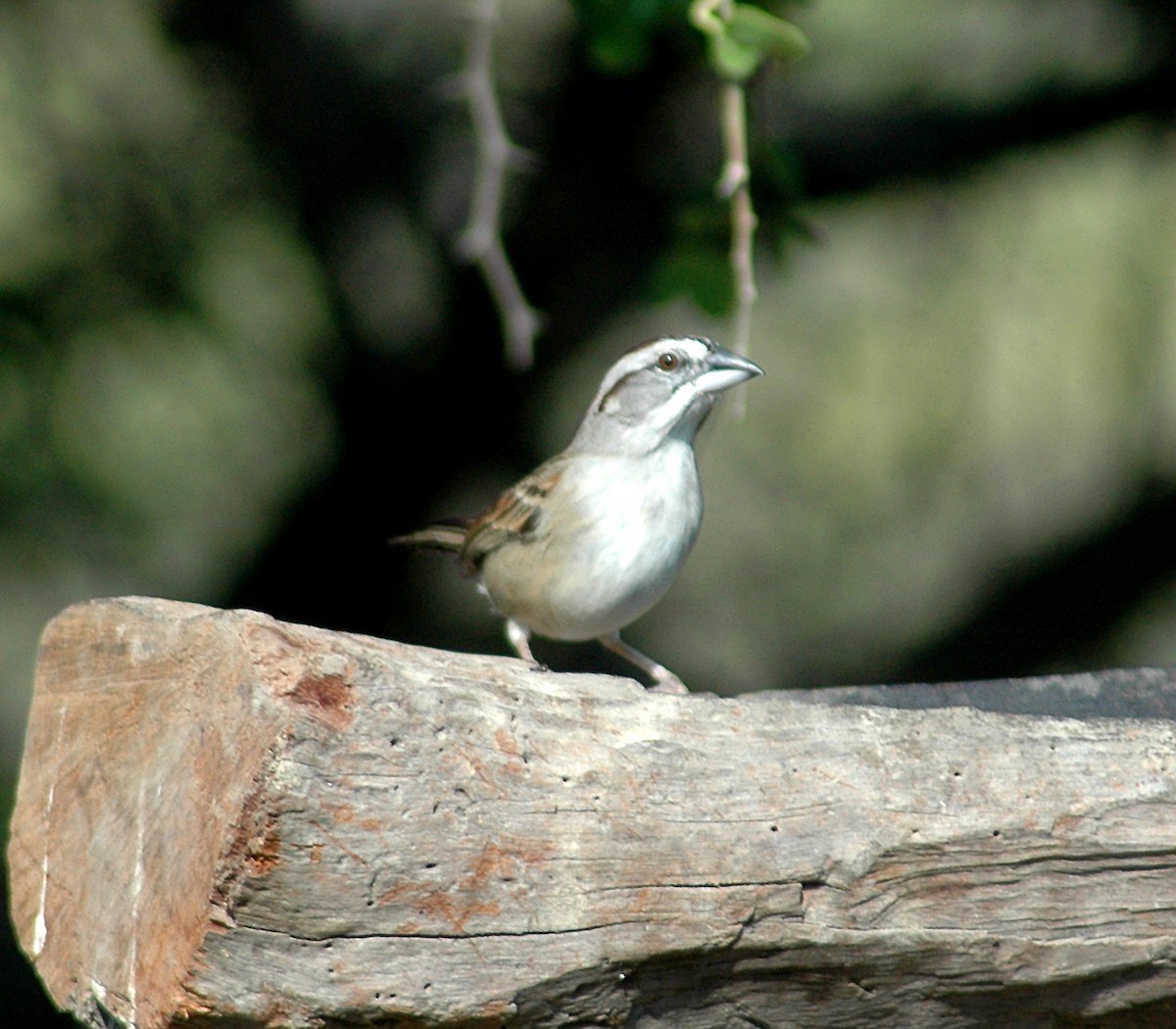Tumbes Sparrow
A species of Stripe-capped and Tumbes Sparrows Scientific name : Rhynchospiza stolzmanni Genus : Stripe-capped and Tumbes Sparrows
Tumbes Sparrow, A species of Stripe-capped and Tumbes Sparrows
Botanical name: Rhynchospiza stolzmanni
Genus: Stripe-capped and Tumbes Sparrows
Content
Description General Info
 Photo By Nigel Voaden
Photo By Nigel Voaden Description
The Tumbes sparrow is a medium-sized sparrow some 14.5 cm (5.7 in) long. The beak is broad and conical, with the upper mandible blackish and the lower mandible horn-coloured. The head has a grey crown with a lateral chestnut stripe that continues as far as the nape, a white superciliary stripe and a brown eyestripe. The upper parts are greyish-brown, shaded with buff, and boldly streaked with black. The wings are blackish-brown with pale edges to the feathers. The greater and median wing-coverts are blackish with chestnut edges and pale tips, and the lesser coverts are chestnut, resulting in a rather obscure barring to the wings. The angle of the wing is pale yellow. The tail is blackish-brown with pale edges to the feathers. The throat is white and the underparts are greyish-white. There is a dark moustachial stripe at the base of the beak. The song can mainly be heard in the breeding season, and consists of a repeated, clear metallic note, reiterated up to five times "chew-chew-chew-chew" interspersed with some trills. 
Size
14 cm
Nest Placement
Ground
Habitat
The habitat of tumbes Sparrow typically encompasses arid scrublands and shrubby areas, intermingled with patches of tall grass. This bird species thrives in environments characterized by a mix of drought-resistant vegetation such as scattered shrubs, low trees, and cacti, with grasses covering the ground sparsely.
Dite type
Granivorous
General Info
Feeding Habits
Bird food type
Distribution Area
This sparrow is endemic to the Tumbes Region of South America. Its range extends from the La Libertad Region of northwestern Peru to the Loja Province of southwestern Ecuador. Its altitudinal range is up to about 1,400 m (4,600 ft). Its typical habitat is dry scrub, open dry woodland, and semi-desert with cacti and bushes. 
Species Status
R. stolzmanni is a fairly common species, and although it has a limited range, no particular threats have been recognised and the International Union for Conservation of Nature has rated its conservation status as being of "least concern". 

 Photo By Nigel Voaden
Photo By Nigel Voaden